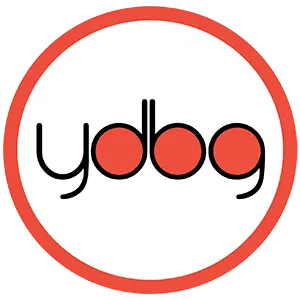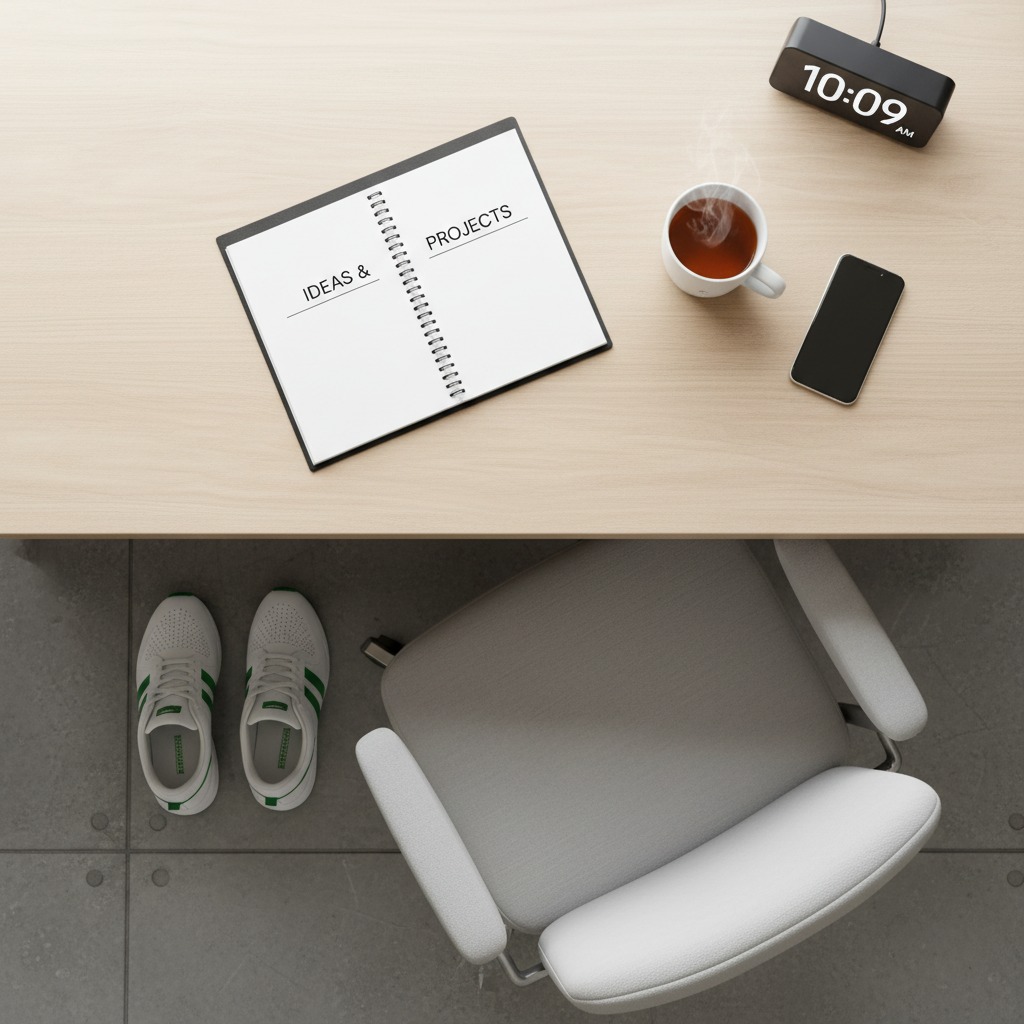You don’t lose self-trust in one dramatic moment. You lose it in dozens of tiny negotiations with yourself: hitting snooze again, skipping the walk you promised, saying yes when your calendar’s already red-lined, telling yourself “I’ll start tomorrow” for the fifth time running. The good news is that you build it back the same way: one kept promise at a time, through lifestyle choices that are realistic, measurable, and aligned with your values.
This is a case study of how to rebuild self-trust through everyday habits. It offers a structured method you can adapt to your life, with concrete metrics, scripts, and week-by-week steps.
What self-trust actually is
Self-trust is not a motivational mantra. It’s an evidence-based belief that you will do what you say you’ll do. It’s measurable, trainable, and highly sensitive to the way you manage promises to yourself. In practice, it’s the composite of three things:
– What you promise (scope, clarity, difficulty).
– How you execute (preparation, friction design, energy management).
– How you respond to variance (renegotiation, recovery, reflection).
A simple rule sits at the center of self-trust: never make a promise you won’t keep—and always renegotiate before you break it. The first part is about designing promises that match your capacity. The second part is about integrity under pressure.
The trust loop of lifestyle
Every day runs on loops: cue, intention, promise, action, reflection. When the loop closes (you do what you planned and acknowledge it), your self-trust ticks up. When it breaks (you ghost your own plan or silently move the goalposts), it ticks down. Labeling failures as moral flaws accelerates the decline. Renegotiating in real time—before a break—keeps the loop intact.
Case study: Alex’s integrity gap
Alex (37) is a senior product designer. He described his life as “a patchwork of almosts.” He was respected at work, but internally he felt brittle and behind. Here’s the baseline (averages over two weeks, self-reported plus device data):
– Sleep: 5 hours 40 minutes on weeknights; bedtime drifted between 11:30 p.m. and 1:30 a.m.
– Movement: ~3,800 steps/day; no consistent training.
– Nutrition: erratic meals; late-night snacking; alcohol 3–4 nights/week.
– Digital hygiene: phone in bedroom; ~5 hours 20 minutes screen time/day; doomscrolling after midnight.
– Work cadence: calendar packed edge-to-edge; frequent context switching; delayed deliverables.
– Mood: 4.8/10 average; high afternoon anxiety.
– Self-trust indicators:
– Say/do ratio: 37% (self-defined daily commitments kept vs. made).
– Renegotiation latency: typically after a miss rather than before.
– Scope drift rate: frequent expansion of tasks midstream.
– Self-Trust: 3/10 (subjective).
Alex’s story wasn’t about willpower. It was a misalignment between promises, systems, and capacity. We implemented a five-step process to rebuild from the ground up.
Building Trust
1) Clarify values, then translate them into behaviors. Alex’s top three values: reliability, presence, curiosity. We converted these into lifestyle aims:
– Reliability → I keep small promises consistently.
– Presence → I protect attention from avoidable noise.
– Curiosity → I make space for learning each week.
2) Audit current promises and capacity. We created an Integrity Ledger: a single place listing every promise he was making (to self and others), with scope, due date, and confidence level. We found 22 active commitments; only 8 had clear scopes and timelines.
3) Design Minimum Viable Promises (MVPs). A promise is a contract; contracts need clarity. We defined:
– Bright-line promises: binary, observable, easy to count (e.g., “Lights out at 11:00 p.m. Sunday–Thursday”).
– Elastic practices: flexible ranges where experimentation is expected (e.g., “15–30 minutes of learning on Tuesdays”).
– If-then contingencies: backup plans to protect the promise (e.g., “If I miss the evening wind-down, then lights out at 11:30 and no screens in bed”).
4) Engineer friction. Lower friction for desired behaviors (shoes by the door, pre-filled water bottle, meal defaults). Raise friction for undesired behaviors (phone charging in the kitchen, app limits, alcohol off the weeknight shopping list).
5) Install feedback and renegotiation. Daily two-minute check-ins and a 30-minute weekly review with metrics. Renegotiation rule: speak to future-self in real time. If a promise looks at risk, adjust scope or timeline before the break.
Implementation: a four-week sprint
Week 0 focused on setup. Weeks 1–4 layered one anchor at a time.
Week 0: Audit and environment reset
– Integrity Budget: no more than three active personal promises at a time. Everything else moves to a backlog.
– Devices: phone charger moved to kitchen; $12 alarm clock in bedroom; greyscale display; strict app limits from 10 p.m.–6 a.m.
– Sleep environment: blackout curtains; eye mask; notebook by bed for offloading thoughts.
– Movement friction down: sneakers by door and under desk; calendar placeholders for short walks.
– Food defaults: grocery delivery with pre-set staples; easy breakfast and lunch templates (e.g., oatmeal with fruit; salad + protein).
– Work boundaries: two no-meeting blocks protected in calendar; new rule—no new yeses without a 24-hour delay.
We selected three initial promises:
– Lights out at 11:00 p.m. Sunday–Thursday. If spillover, 11:10 latest.
– 10-minute walk after lunch Monday–Friday. If weather blocks, 10 minutes of stair walking or light stretching.
– Plate before pixels: no phone during meals.
Week 1: Sleep anchor and digital sunset
Sleep drives almost every other metric. We paired the lights-out promise with a digital sunset:
– 10:15 p.m. shutdown ritual: devices to charge station, lights dimmed, a few pages of fiction or journaling.
– If a late meeting threatened the schedule, Alex would message a teammate by 9 p.m. to reset expectations on deliverables.
Results after seven days:
– Say/do rose from 37% to 61%.
– Average sleep jumped to 6 hours 35 minutes.
– Renegotiations happened before breaks twice—first time in months.
– Morning mood notes shifted from “foggy/rushed” to “calmer/alert.”
Week 2: Movement anchor
We kept the sleep anchor and added a low-friction movement commitment:
– 10-minute walk after lunch, five days a week, set as a recurring calendar event.
– Sneakers under desk; rain plan as above; company if a colleague joined.
– Added an optional elastic practice: two sets of push-ups Tuesday/Thursday.
Results:
– Steps averaged 6,300/day.
– Afternoon energy improved; Alex reported fewer 3 p.m. crashes.
– Say/do: 68%. Importantly, promises remained small; scope creep was resisted.
Week 3: Nutrition environment, not perfection
We avoided restrictive rules and focused on clarity and defaults.
– Breakfast and lunch templates: one-minute decisions, not ten-minute negotiations.
– Hydration: 500 ml water upon waking; bottle at desk.
– Late-night snack friction: less snackable foods at home; if hungry, default to yogurt or fruit.
– Alcohol: a bright-line experiment—no weeknight drinks for two weeks; social drinks allowed on Friday/Saturday with a two-drink cap.
Results:
– Sleep improved further (night wakings down).
– Self-reported morning cravings decreased.
– PKR: 76%. Mood average: 6.6/10.
Week 4: Attention and time boundaries
Without attention hygiene, even healthy bodies get dragged by context switches.
– Two no-meeting mornings protected. Hard stops added to calendar boundaries.
– Deep work block: one 90-minute session daily with a clear deliverable defined the night before.
– Email hygiene: twice daily processing windows; outside these, inbox closed. Two-minute rule for triage; complex replies added to task list with deadlines.
– “No new yes without a day”: when asked for new commitments, Alex paused 24 hours to assess capacity and scope.
Results and six-week check-in
We extended observation to six weeks to see durability. Key changes:
– Say/do: 82% sustained. Misses happened, but renegotiations occurred before breaks 70% of the time.
– Sleep: 7 hours 10 minutes average on weeknights. Variability decreased.
– Steps: ~7,500/day on average; more weekend hikes emerged organically.
– Mood: 7.2/10; anxiety spikes less frequent and shorter.
– Self-Trust Index: 7/10. Alex reported a marked shift in internal dialogue from “I hope I do this” to “I probably will because I said I would.”
– Work delivery: on-time rate improved; fewer last-minute scrambles; peers noted reliability.
What actually made the difference
– Smaller, clearer promises. When the minimum is doable, you stop negotiating with yourself. Confidence compounds.
– Renegotiation before breaking. This preserved integrity even under stress and taught Alex to spot risk early.
– Friction engineering. Moving a charger and buying an alarm clock did more than abstract willpower ever did.
– Single anchors first. Layering one commitment per week avoided the boom-bust pattern.
– Integrity Budget. Capping active promises prevented dilution of focus.
A structured approach you can use
Step 1: Define why in behavioral terms
Pick three values and write one sentence each that translates them into a lifestyle behavior. For example:
– Health → I sleep 7 hours on weeknights.
– Reliability → I keep two daily promises and track them.
– Presence → I start and end the day without my phone.
Step 2: Run an integrity audit
– List every promise you’re making to yourself and others.
– For each, state scope, deadline, and confidence (0–100%).
– Circle anything below 80% confidence. Either shrink scope or push the deadline until confidence is 80%+.
Step 3: Choose your Minimum Viable Promises
Pick at most three for the next two weeks. Make them binary and observable. Examples:
– Lights out 11:00 p.m. Sunday–Thursday.
– 10-minute walk after lunch Monday–Friday.
– Plate before pixels.
Add if-then backups where appropriate:
– If I miss the lunch walk, then I’ll take a 10-minute walk after my last meeting.
– If I work past 10:30 p.m., then I’ll still put the phone in the kitchen and lights out by 11:10.
Step 4: Engineer friction
– Lower friction: lay out clothes; prep water bottle; schedule recurring blocks.
– Raise friction: remove tempting apps from the home screen; charge devices outside the bedroom; don’t stock default snacks you want to avoid.
Step 5: Install feedback loops
Daily two-minute check-in:
– What two promises did I keep today?
– Did I renegotiate before any break? If not, what cue did I miss?
– One small improvement for tomorrow.
Weekly 30-minute review:
– PKR for the week.
– Self-Trust Index (0–10).
– Which promise was too big? Shrink it by 20%.
– Which friction lever worked? Double down.
Useful metrics to track
– Say/do: what you say you’ll do / what you actually do. Target 70%+.
– Renegotiation latency: time between noticing risk and taking action. Target: renegotiate before the deadline.
– Scope drift rate: how often do tasks expand midstream? Target: drift only during planned reviews.
– Recovery time after a slip: how long before you resume the plan? Target: one cycle (next day or next block).
– Sleep duration and variability: more consistent sleep increases capacity across the board.
Renegotiation scripts
– With yourself: “To keep my word, I’m shrinking today’s promise to 10 minutes of X. I’ll revisit scope on Friday.”
– With others: “To deliver reliably, I can commit to the core features by Wednesday. The additional items would need until next Monday or a separate sprint.”
Advanced tactics for harder contexts
– Confidence-calibrated commitments: attach a probability to each promise. If you consistently miss, you’re overconfident; shrink scope. If you consistently exceed, gently stretch.
– Red/amber/green system: green promises are stable; amber are experiments; red are aspirational and not counted against your PKR.
– Integrity budget: set a maximum number of active personal promises (e.g., three). New promises require retiring or completing one.
– Ulysses pacts: precommit in ways that make a future break costly (deliver the deck to a peer a day early; schedule a co-working session; use website blockers).
– Recovery protocols: define in advance what you do after a miss (journal for five minutes, renegotiate the next commitment, take a walk). Pre-deciding your recovery prevents spirals.
Common pitfalls and how to avoid them
– Making promises to impress an imagined audience. No one sees your spreadsheet. Make promises that fit your actual life.
– Vague commitments. “Eat better” is not a promise. “Two servings of vegetables with dinner” is.
– All-or-nothing thinking. A 10-minute walk kept is superior to a 60-minute workout skipped.
– Delayed renegotiation. If you notice risk, speak up—internally or externally—before the break. It’s the difference between a detour and a crash.
– Tracking too much. Start with three metrics. Add more only when the basics feel automatic.
How to start this week
– Set a 60-minute block to run your audit and choose your three MVPs.
– Prepare your friction moves immediately (rearrange the bedroom, set app limits, put shoes by the door).
– Schedule your daily two-minute check-in and a weekly review on your calendar.
Daily five-minute sequence
– Look at your two or three promises.
– Visualize the first cue and the first action.
– Identify the most likely blocker and name your renegotiation plan.
– End the day by checking boxes and writing one sentence about how you kept your word.
Weekly 30-minute sequence
– Compute say/do ratio and rate your self-trust.
– Identify one promise to shrink by 10–20%.
– Identify one friction change to try next week.
– Retire one commitment and choose a replacement if you have bandwidth.
What changed for Alex continued to compound. Six months later he wasn’t perfect—no one is—but he was predictable to himself. He had built a small internal courtroom where the evidence said, “When he says he’ll do something, he does.” That’s self-trust. It’s not loud and it’s not glamorous. It’s the quiet reliability of a person whose lifestyle choices match their stated values.
You build it with promises small enough to keep, systems sturdy enough to support you on bad days, and the courage to renegotiate before you break your word. If you do that, the gap between who you are and who you want to be narrows a little each day, and the person you trust most with your life becomes the one you see in the mirror.







